Mount Gulian
Introduction
Author-Uploaded Audio
Audio by Holley Snaith
Text-to-speech Audio
Located on 48 acres overlooking the Hudson Valley, Mount Guilan is a restored historic house museum in Beacon, New York. Listed on the National Register of Historic Places, it is known for serving as the headquarters of Major General Friedrich von Steuben during the American Revolution. It was also here in 1883 that American and French officers founded the Society of the Cincinnati, the country's first veteran's fraternal organization. Mount Gulian continues to serve as headquarters for New York's chapter of the Society of the Cincinnati. Today, the museum offers various educational programs for students such as exploring colonial and Revolutionary War-era life in the Hudson Valley. Also on the site is an 18th century barn, available to rent for weddings and other events, and a four acre garden.
Images
Mount Gulian
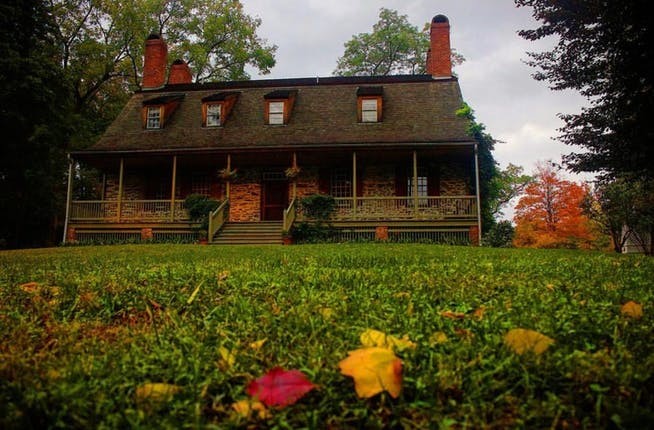
A View of the Gardens
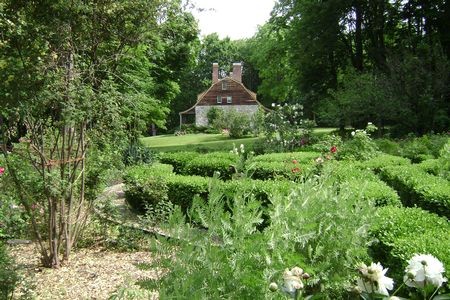
The View of the Hudson River from Mount Gulian
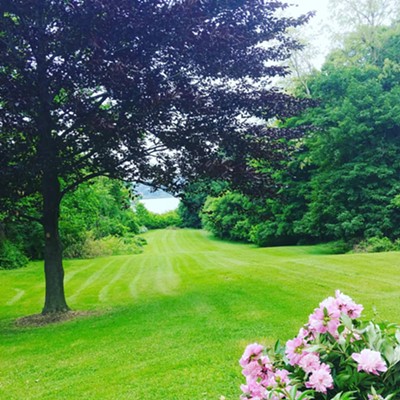
The Barn at Mount Gulian
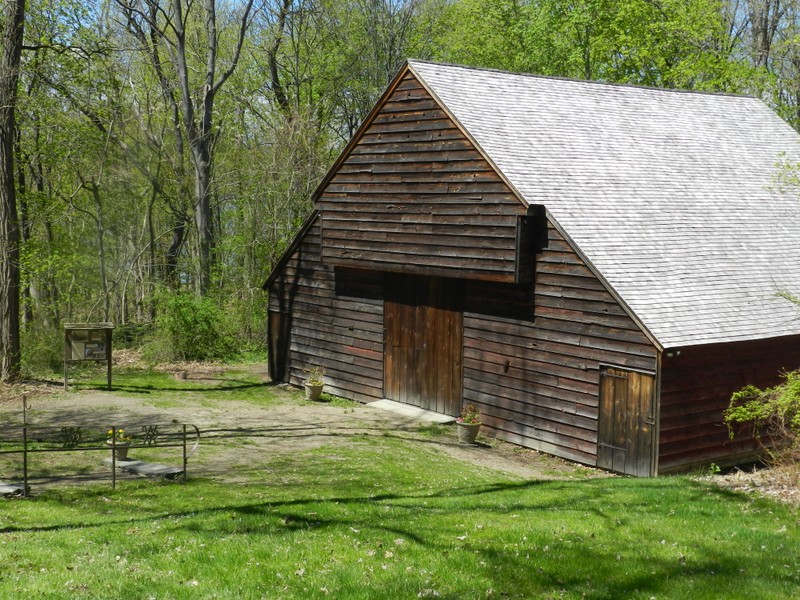
The Mount Gulian Historical Marker
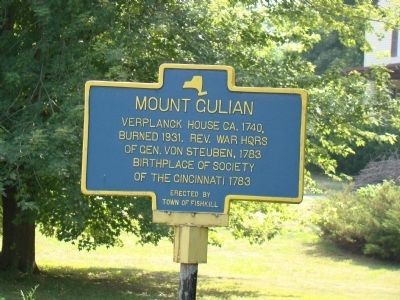
Backstory and Context
Author-Uploaded Audio
Audio by Holley Snaith
Text-to-speech Audio
In the late 17th century, prominent fur traders Gulian Verplanck and Francis Rombout purchased 85,000 acres from the local Hudson Valley Wappinger Indians. Gulian's grandson, Gulian II, acquired almost 3,000 acres after his grandfather's death and built a home on 480 acres between 1730 and 1740. He named the home Mount Gulian, in honor of his namesake. Originally, Mount Gulian served as a summer retreat for the Verplanck family, whose main residence was in New York City. Prominent in the City, the Verplancks played a large part in the development of the banking and business industries, including serving as some of the first Trustees of Kings College, now Columbia University.
Prior to the beginning of the Revolutionary War, Samuel Verplanck became associated with anti-British groups such as the "Committee of Safety of One-Hundred," whose mission was to prepare to take over Manhattan in the event of rebellion against Britain. The Battles at Lexington and Concord on April 19, 1775 marked the beginning of America's War for Independence and the Verplanck family immediately enlisted to advance the cause.
At the turn of the 18th century, the Verplanck family were slave owners, but their opinions on slavery evolved upon joining the Whig Party, proponents of states restricting and abolishing slavery. In the late 1820s, when slavery was abolished in New York State, Daniel Verplanck bought the freedom of a fugitive slave named James F. Brown. Brown spent forty years working for the Verplancks, serving as coachman, gardener, and property manager. Throughout his decades at Mount Gulian and with the Verplancks, Brown kept a detailed daily diary.
1783 was a critical year in the history of Mount Gulian. The Continental Army's drillmaster and inspector general, General Friedrich von Steuben, established his headquarters there and intensely trained the inexperienced American Army. That same year, the American and French armies established the Society of the Cincinnati, intended to support veterans. Mount Gulian continues to operate as the New York headquarters for the Society of the Cincinnati, one of 14 chapters still in existence.
For 200 years, Mount Gulian acted as the home of the Verplanck family until it was tragically burned to the ground by an arsonist in 1931. It was more than 40 years later in 1975 that a reconstructed Mount Gulian was opened to the public for tours. Visitors today enjoy a trip back to Colonial America and can view artifacts gifted to Gulian Verplanck by the Wappinger Indians in the 1600s.
The historic gardens that Brown tended were designed in 1804 by Daniel Verplanck and his daughter Mary Anna. At the time of creation, the garden was six acres of flowers and vegetables, now it covers four acres. Brown managed the garden from around 1827 to 1866. In his diary he wrote about everything from births and deaths to his ferry excursions to Newburgh to purchase plants from the Andrew Jackson Downing nursery. Today Mount Gulian, which overlooks the serene Hudson River, serves as a premier setting for weddings and other events. More importantly, Mount Gulian serves as an education site for adults and children; a history that was nearly forgotten.
Sources
Mathason, Amy. Mount Gulian. The Hudson River Valley Institute. Accessed June 19, 2018. http://www.hudsonrivervalley.org/review/rvw_mount_gulian.
Mount Gulian Historic Site. Hudson River Valley National Heritage Area. Accessed June 19, 2018. http://www.hudsonrivervalley.com/sites/Mount-Gulian-Historic-Site/details.
The Garden. Mount Gulian Historic Site. Accessed June 19, 2018. http://www.mountgulian.org/garden.html.
The Verplanck Family, Mount Gulian Historic Site. Accessed July 15th 2021. https://mountgulian.org/history/the-verplanck-family/.
Here Comes The Guide
Hudson River Valley National Heritage Area
Chronogram
Hudson Valley Weddings
The Historical Marker Database
